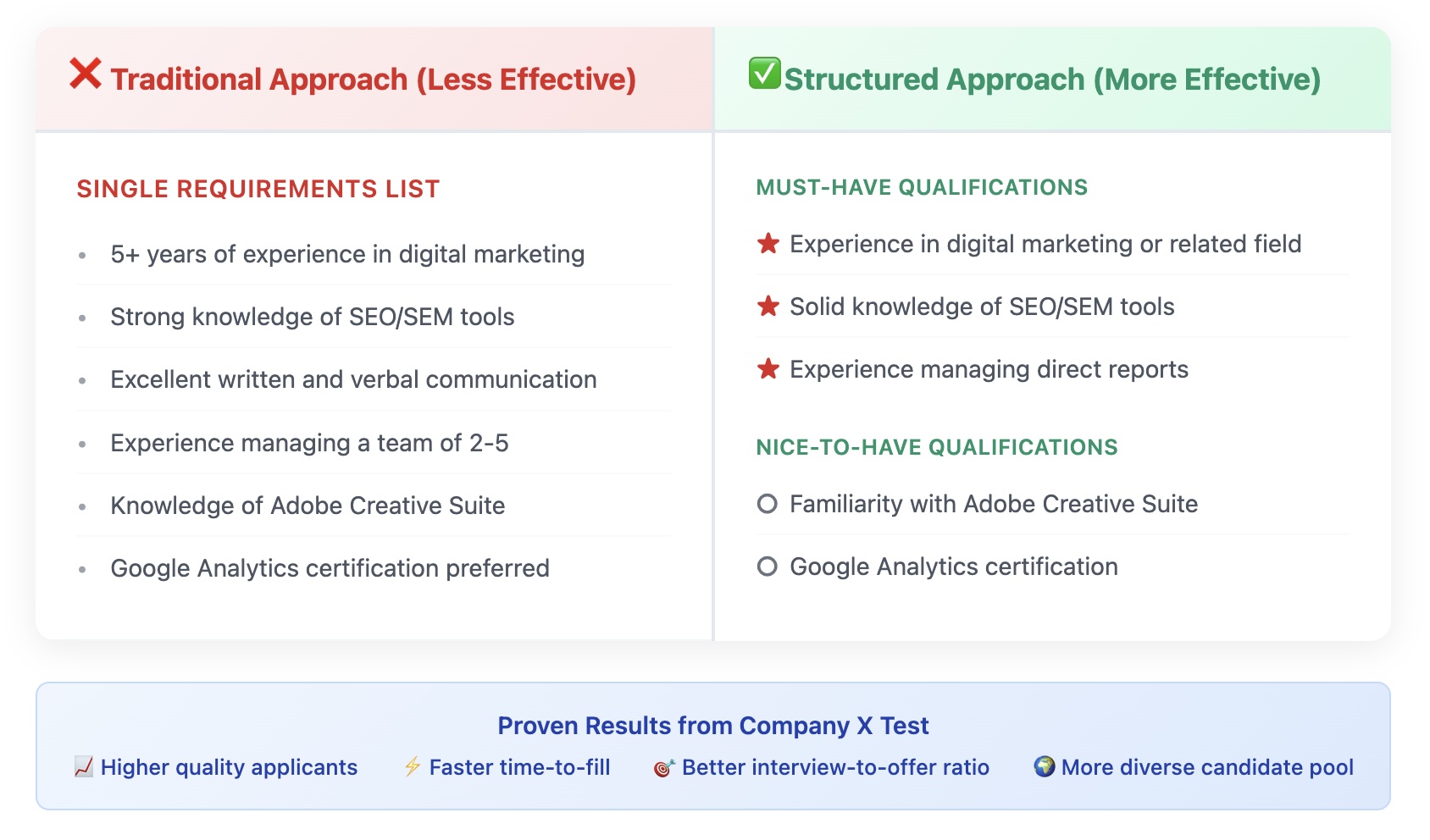American workplaces have undergone a smooth evolution, incorporating the essential components of a modern workplace. At the center of this transition lies the willingness to go beyond traditional compensation packages and immerse employees in company culture. As such, employee perks in the US show an inclination to reflect the best of this culture.
These perks allow companies to carve a distinct identity and support their employee engagement employee engagement initiatives by reinforcing company culture and values in building a brand that attracts and retains talent.
However, it has become apparent that many people tend to confuse perks with benefits. The section below addresses the confusion and eliminates any scope for doubt.
If you are wondering what unique perks you can offer your employees, this blog will help you with several ideas for perks. So, let us now delve into an array of employee perks in the US that employees seek. Implement them and gain your edge in the competitive landscape of the American job market.
What are Employee Perks?
Employee perks are add-on amenities offered by a company to enhance employee experience, engagement, retention, and talent attraction. People often use the terms “benefits” and “perks” interchangeably, blurring their differences. However, differences do exist between the two.
Benefits mainly cover the basics of a standard employee package. Companies are bound by legal obligations to offer benefits. They include health insurance, paid time off, retirement plans, etc.
On the other hand, perks are free from any legal obligation. They are categorized as “extras” that employers seek to invest in to improve employees’ quality of life. Examples are gym memberships, tuition assistance, childcare assistance, work flexibility, etc. These facilities are not mandatory to make employees work, but they add zeal for employees to thrive and enjoy working. The discretionary nature makes perks differ across companies. Companies can utilize their creativity to tailor perks depending on the needs and culture of the workforce, allowing them to differentiate themselves.
Clients do not come first. Employees come first. If you take care of your employees, they will take care of the clients
– Richard Branson
15 Effective Employee Perks in the US in 2024
After garnering a sound knowledge about perks and their distinction from benefits, you are finally prepared to delve into a list of prevalent employee perks in the US.
These perks, tailored to meet American workers’ needs and wants, can create a positive workplace, boost employee happiness, and tap into untapped potential.
Here are 15 effective perks that U.S. companies can offer.
1. Subsidized Gym Memberships or Fitness Centers
According to a Career Builder survey, 23% of respondents said that having On-site fitness centers makes them willing to join or stay at the company.
Among the range of perks companies wish to offer, gym membership is an enticing option for employees. Given the current workforce’s obsession with fitness, regular workouts are a suitable means to reduce health risk factors and relieve stress.
Investing in an onsite gym or fitness center can be equally rewarding for a large-scale company. This can help you in the long term to establish office fitness challenges that help bloom and strengthen camaraderie among employees. Alternatively, signing up for a membership for employees in a local gym is also a feasible choice. You can then offer flexibility by allowing them to choose their favorite fitness programs and reimbursing them for the same.
2. Yoga Sessions
Besides traditional gyms and fitness centers, which are on the rise, you can opt for an alternative, such as providing onsite yoga classes. Yoga sessions are fruitful for employees, helping them gain peace and escape stressful scenarios. Also, it is no secret that yoga has the power to heal health issues and help employees stay active and energetic in the long run.
3. Healthy Snacks and Beverages
According to a Hoppier study, getting access to free food in the office increased employee happiness by 11%. In addition, 61% of employees said that free snacks helped them save money throughout the workweek
The craving for snacks among employees is undeniably higher. And given how it is linked to happiness, it is surely a favorable option to ignite motivation in them. To be precise, occasional snack packs won’t do the trick here. Instead, a long-term approach is the need of the hour.
However, it is also important to be mindful of the snacks you provide them. Keep unhealthy snacks at bay. Instead, provide regular healthy snack alternatives, be it at a subsidized cost or free of cost. Having said that, providing a snack fridge and coffee station could make employees feel appreciated and satisfied.
4. Ergonomic Workstations
Employees, companies’ primary assets, face a staggering loss when their employees meet with ergonomic injuries. When suffering these injuries, employees often complain of health problems such as:
- Musculoskeletal disorders
- Back and neck pain
- Carpal tunnel syndrome
- Eye strain
Therefore, it becomes significant for employers to invest in proper measures to protect their valuable employees. You should consider introducing ergonomic workstations to reduce the aggravating risks. These workstations are designed to maximize efficiency, comfort, and safety for your employees, allowing them to deliver their best work. Everything from an adjustable and supporting chair, adjustable desk, footrest, anti-fatigue mat, etc, falls under the ergonomic workstation.
5. Flexible Work Arrangements
Flexibility in work arrangements is a highly sought-after perk, and it serves as the foundation of modern work environments. A 9-5 setting may not be favorable to all. Some employees may prefer to choose a slot that works best for them. It helps them attain a work-life balance, a priority in their job search criteria. Hence, granting employees the autonomy to select their preferred work schedule and desired work setting can significantly boost productivity and work quality.
This is where hybrid work and work-from-home models come into play. Once the phenomenon of working from home got employees attached to its taste, it started gaining its demand exponentially. It has become one of the most preferable working options among the employees. And for employees who want a taste of both remote and on-site working, you can possibly offer a hybrid work model that allows employees to absorb the benefits of working both at home and on-site, thus offering the flexibility they desire. Additionally, considering perks like internet bill reimbursement can further support employees in their remote work endeavors.
6. Sabbaticals
Besides mandatory parental leaves in several countries, sabbaticals are rather rarely offered as perks. But here, you can turn the tables by approving their sabbatical when the requirement is deemed right. Prolonged sabbaticals help employees rejuvenate and enhance their personal growth, particularly when burnout sets in.
7. Employee Stock Options (ESOs)
In PwC’s 2023 survey on employee money worries, 60% of all workers feel stressed about their finances. Surprisingly, even among those making $100,000 or more each year, nearly half (47%) still feel the financial pressure.
Financial worries are part and parcel of an employee’s life. With the aim of additional earnings, employees are always on the lookout for an extra. This is where stock options fit into the picture. Employee stock options can be an ultimate win-win when implemented right. It will give employees a share of the company’s growth with the expansion of stocks. Stock options offer the potential for wealth accumulation, tax advantages, and long-term commitment, as they often come with vesting periods. This perk will serve as a compelling incentive to ignite better performances.
8. Game Rooms or Relaxation Areas
According to Mayo Clinic expert Edward R. Laskowski, M.D., sitting for more than eight hours a day can be detrimental to one’s health.
Incessant working without any breaks or relaxation can adversely affect an employee’s mental well-being. The adage “All work and no play makes Jack a dull boy” suitably captures the situation. On the same note, you should not compel your employees to follow Jack’s path and lead a dull and monotonous life. Hence, you can develop game rooms and relaxation areas that give them the required breaks from their regular work. These rooms can be utilized for playing physical games or engaging in team-building activities, promoting a healthier work-life balance.
A study by Brigham Young University showed that when newly formed teams played video games together for 45 minutes, they experienced a 20% boost in productivity in the subsequent task. These breaks have proven to help boost productivity.
9. Free or Discounted Tickets to Local Events
Offering employees free or discounted local event tickets is an effective employee perk. This can cover a range of events such as concerts, sporting events, theatre performances, art exhibitions, etc. Negotiating partnerships with local venues can fetch your company discounted or complimentary employee tickets. This helps employees enhance their bonding with team members through shared experiences. Your commitment to promoting an enjoyable workforce will give employees a reason to stick to you in the long run.
10. Employee Recognition Programs
The impact of recognition in the workplace is undeniably significant, given the ability to transform a workplace for the better. A simple ‘thank you’ or an appreciation holds immense potential to boost employee motivational levels.
Set yourself apart by consistently acknowledging employees for their efforts and contributions. This will not only push employees to enhance their productivity but also foster a culture of recognition in the workplace. Also, this practice should extend beyond managerial recognition and include peer recognition. This way, recognition becomes widespread and an integral part of workplace dynamics.
Recommended Resource: Employee Recognition Guide: Strategies for Motivating and Engaging Your Team
11. Casual Dress Days or Themed Workdays
Trying to instill a sense of fun through themed workdays or casual dress days also makes a favorable perk. Introducing such themed workdays is a rather low-investment morale booster among employees. The excitement that builds in them gets them further motivated for their work. Many organizations are driven to choose Friday as D-Day because of the weekend vibe employees get. In addition, it is always better to be mindful of generational differences and general corporate culture before deciding on the dress code.
12. Volunteer Time Off
It has come to notice that companies are understanding the value of helping their employees in giving back to the community.
According to an SHRM study, US companies offering volunteer programs increased from 40% in 2014 to 47% in 2022.
Involvement in such group volunteer efforts helps nourish relationships among team members. It further helps maintain and promote a supportive work environment.
13. Childcare Facilities and Assistance
Working parents face many difficulties catering to their children’s care and assistance. The fact that they require consistent care compels working parents, particularly women, to renounce their work. Not many companies consider this to be a crucial aspect to work into. As a result, parents face diring consequences.
According to a study by the U.S. Chamber Foundation conducted to understand the impact of childcare problems across the country found that the US lost billions of dollars in economic activity due to childcare breakdown.
Having said that, childcare facilities are considered valuable employee perks, particularly given that parents seek ways to balance work and family responsibilities. Hence, assisting parents by providing convenient childcare facilities can significantly enhance employee satisfaction, productivity, and retention. This can help you make your company preferable to working parents.
You can offer these common childcare facilities as an employee perk:
- Develop on-site childcare centers within the workplace or near the workplace premises. These childcare centers are typically staffed with trained professionals who provide educational and recreational activities for children in a safe and nurturing environment.
- Offer financial assistance to employees to alleviate the cost of childcare. This could cover reimbursements, vouchers, or direct payments to approved childcare providers chosen by employees.
- Come up with backup childcare services to offer temporary solutions during unexpected situations when regular arrangements falter due to some issues.
14. Exclusive Employee Discounts
Employee discount programs are a vital and highly valued perk in the USA, offering many benefits to employees and employers.
These programs, focusing on engagement and accessibility, provide a powerful incentive for employees, demonstrating that their organization cares about their financial well-being and quality of life.
Depending on the industry your company belongs to, you can either offer your company’s products and services at a discount or partner with other businesses to provide the same. At the same time, some large-scale companies can even opt to balance both the in-house and partnership perks.
For instance, Apple gives employees a whopping annual discount off 25% for all employees. Zappos also gives a 40% discount to its employees on all products. Now, taking Starbucks as an example, employees get 30% off on their favorite drinks from the store itself. Additionally, the company provides an employee pricing program that guarantees discounts for 20 categories, from home appliances to shoes, etc.
15. Conference/Training Funding
Employees always look forward to working in companies that are particular about assisting them with growth opportunities. Well, you can guarantee your place in the demanding list by making growth-oriented offerings.
Assist your employees by funding their attendance at relevant conferences, seminars, trainings, or workshops related to their profession. This allows them to learn new trends, build skills, and expand their professional networks.
Recommended Resource: List Of 25 Companies with Best Employee Perks
How to Choose the Right Perks
Choosing the right perks is crucial in maximizing their impact on employees and the organization. Hence, you must be vigilant about the factors surrounding your workforce. Consider the following aspects while choosing the right perks.
Understanding your Employees’ Needs and Wants
The crucial initial step is to understand your employees’ needs and wants. And to fetch the necessary details, you need to consider these options:
- Conduct surveys and interviews to gather employee feedback on the kind of perks they find valuable and motivating. The input you gather is invaluable.
- Look for demographic data to figure out the differences in perks owing to age, family status, location, etc.
- Try identifying the key pain points of your workforce and let them guide you in your perk selection.
Considering your Company Culture
You must always be mindful of your company culture while assessing and selecting perks.
- You must ensure that the perks you want to offer should authentically align with your company values, mission, and brand.
- Fun and unique perks have the potential to foster a casual and creative environment, which is valued in some work cultures.
- Engage your employees in the perk selection process to get their support and to pinpoint offerings that genuinely align with your company culture.
Balancing Cost and Impact
Balancing is the key to attaining your goal. Ensure your budget and the impact you wish to create are in sync.
- Analyze your budget and prioritize those perks that will fetch the highest returns for employees at a reasonable cost to the company.
- Draw a comparison between must-haves and nice-to-haves. Prioritize investing in highly impactful and highly valued perks.
- Regularly review and mold your perks over time, depending on costs, employee feedback, and workplace trends.
- Getting the balance right maximizes the ROI of your perks program.
Tips for Implementing an Effective Perks Program
The primary aim here is to ensure that your perks program proves to be effective for your employees. Hence, you must be mindful of implementing these programs while keeping certain aspects at the center. The following tips will help you implement an effective perks program.
Get Employee Input
Proper implementation will only be successful when you seek input from employees. These perks programs are solely designed for them. Therefore, their input plays a crucial role in crafting the best programs to their liking. And this is how you can gather employee input:
- Conduct surveys and organize town hall meetings to get feedback from employees about the perks they want and value the most. Stay away from jumping into assumptions about what they like.
- Involve employee representatives from different teams during the design and selection process.
- The feedback-gathering process should be regularly held and adapted to employees’ evolving interests and needs.
Communicate Effectively
Irrespective of proper planning and implementation of the perks program, investing all the time and resources without keeping your employees in the loop about your decisions and processes, you are far away from attaining the desired impact you aimed for. Hence, you should keep communication alive and transparent among your employees.
- Don’t simply release the new perks discreetly. Rather, they should be promoted through clear messaging highlighting the reasons for their selection and the potential benefits for the employees.
- Make use of multiple channels, such as emails and team meetings, to spread awareness about available perks.
- Make the understanding process of the full suite of perks for employees easy and accessible.
Track and Measure
It is very important to understand and get a clear picture of how well the perks are faring among the employees. Hence, tracking and measuring the impact and utilization of perks is necessary.
- Implement systems that help you track the utilization metrics for each perk in terms of enrollment, participation, usage rates, etc.
- Seek regular feedback on their satisfaction levels with current perks and identify areas for improvement.
- Do not simply assume that perks are working. Try validating their impact through data and adjust them accordingly.
- Make sure to use tools to benchmark your perks against the perks offered by competitors to ensure competitiveness.
Having a systematic approach to getting employee buy-in upfront, promoting the perks enthusiastically, and continuously measuring effectiveness enables companies to refine their offerings and ensure they resonate with employees. It prevents wasted spending on unpopular perks and drives stronger returns.
Final Words
The entire discussion above has probably given you a wide picture of how you can construct a thriving workplace for your employees, keeping employee perks at the center. By going the extra mile and offering these perks, you are nurturing a company culture that employees will be willing to participate in.
So, what are you waiting for? You have got everything at your disposal. Start curating an employee’s experience using the list, tips, and recommendations offered.












